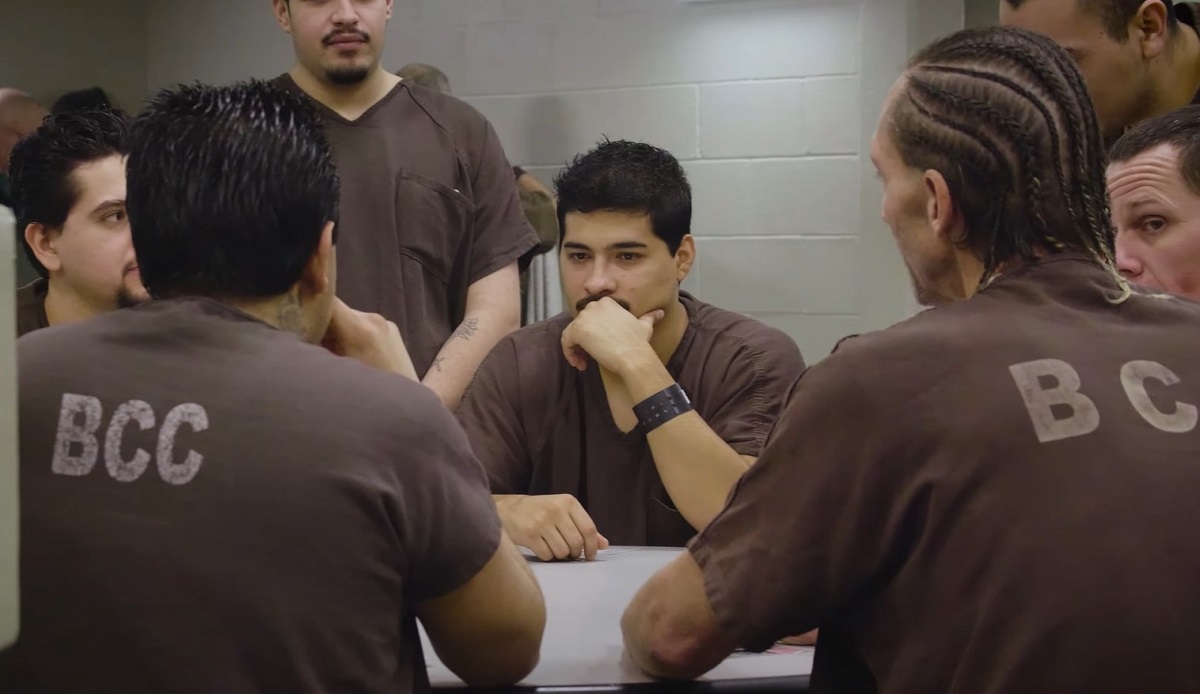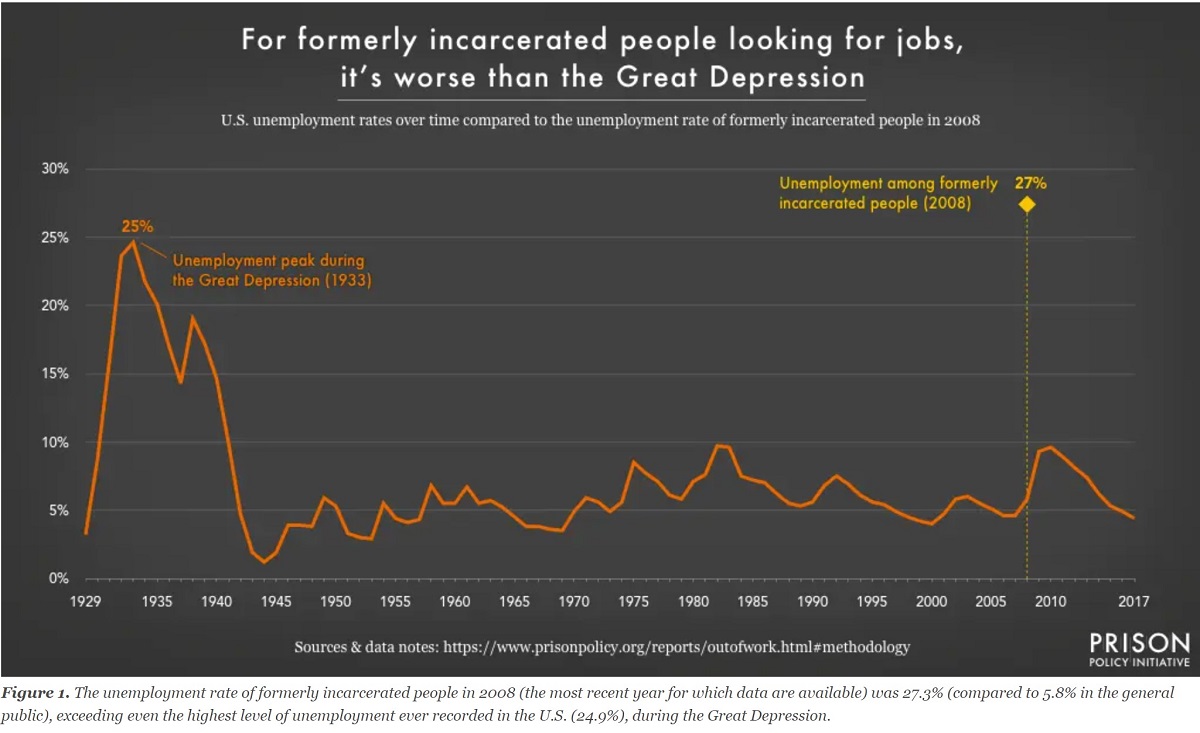The Impacts of Inmate Rehabilitation
When we hear the term “rehabilitation,” some may initially picture physical therapy after an accident or healing from an addiction. Google defines rehabilitation as: “care that can help you get back, keep, or improvise abilities that you need for daily life.” Despite its broad application, the concept is to help restore the optimal functions people need for their well-being.
More often than not, the word rehabilitation isn’t directly correlated to inmate rehabilitation. Why? Well, inmate rehabilitation is a controversial discussion that isn’t often talked about.
Some people believe that inmates are locked behind bars for a reason and don’t deserve to have the opportunity to take courses or learn how to better themselves. Others believe that inmates serve their time for a reason and should be given a fresh start when released. The angle of this blog focuses on the latter and sheds light on what steps are taken to push for rehabilitation and reduce recidivism.
Let's Talk Stats
There are currently over 2 million individuals incarcerated throughout the U.S. with an average sentence of over 2.5 years long. This number triples to almost 7 million American individuals when including those who are either incarcerated, on probation, or on parole. And each year, more than 600,000 individuals are cycled in and out of state and federal prisons while another 9 million rotate through local jails.
If those numbers don’t shock you, then how do you feel about the fact that more than two-thirds of offenders are rearrested within three years of their release, and half of them are reincarcerated? How can that many people be in jail or prison? More importantly, how can that many people re-offend after already serving a sentence? Didn't they learn their lesson the first time?
Unfortunately, it’s not that simple.
Inmates who don’t have the privilege of rehabilitating are much more likely to recidivate, or as Google defines it, “relapse into a previous condition or mode of behavior.” To track recidivism numbers means to track the number of inmates that re-offend after release. However, there isn’t a universally accepted best practice for measuring this number accurately, leading agencies to track these metrics differently.
For example, the California Department of Corrections and Rehabilitation (CDCR) measures their recidivism number solely on how many inmates commit an additional crime within three years of release. Conversely, other agencies measure their recidivism rates by the total number of offenders who return to prison, in general.
Again, these are just the best practices that work for specific agencies. In most cases, recidivism is typically only (and informally) determined through the lens of whether or not the rehabilitation programs were successful.
So, if there isn’t a universally solid method of tracking recidivism, how can we ensure that rehabilitation programs actually work? At this point in time, it’s difficult to say for sure. But let’s talk about the tools that’ll bring the number of 2 out of 3 offenders rearrested down to 0.

What Are Some Examples of Rehabilitation Programs?
Rehabilitation programs were designed and created to increase the likelihood of offenders building a better, safer, and crime-free lifestyle upon release. The first assumption of many is that these programs teach the basic skills of being a civilian in society.
While this is true, the lessons taught in these programs go far beyond learning how to live in the “real world.” They address the underlying reasons that led to their criminal history in the first place. Studies have shown if the programs are implemented effectively that the number of individuals who re-offend drops immensely.
Some examples of rehabilitative programs include:
Substance abuse prevention and treatment (AA, NA, etc.)
Anger management and violence prevention
Financial literacy programs
Sex offender treatment
Career technical education
Cognitive behavioral therapy
Employment preparation
Crisis training and mental health first aid (helping another inmate in distress)
And many more programs to ensure they are equipped with the knowledge and skills to maintain a low-risk lifestyle and reduce their likelihood of reoffending.

Several of these programs rely on volunteers and nonprofits, such as Goodwill and Catholic Charities, to donate items that help contribute to reduced recidivism rates. Whether that means clothes, food, shelter, or even time and energy, volunteers and nonprofits who donate soft-hand resources dramatically help offenders get on their feet as soon as they are released. Starting the entrance back into society doesn’t seem so scary when you have a little help to lean on.
Take it from Crystal Luna, a Community Health Worker at Coconino County, AZ. She has worked tirelessly throughout the years providing programming and managing the inmate programs at the Coconino County Jail. She just recently moved to the Health and Human Services Department focusing on building educational programs for post-incarceration support and community reentry.
The whole point of these classes is to reduce recidivism and prepare incarcerated individuals for being released back into society.
Crystal LunaCommunity Health Worker | Coconino County, AZ
Who Participates in the Programs?
While some programs are 100% voluntary for all inmates to participate in, no matter what they’re serving time for, other programs have a more rigorous entry. There are some more intense programs that require inmates to be interviewed and accepted in order to participate. Some courses are court-ordered by a judge to drive the inmate to learn other lifestyle choices in hopes it’ll give them a new perspective. However, and predictably, most classes are typically utilized by inmates who will be released in the near future.
The majority of counties in the U.S. try to provide as many resources and educational programs as they can afford. However, even if they have every opportunity to provide for their inmates, that doesn’t necessarily matter. What matters is when the inmates are ready to accept change and want to learn the tools to turn their lives around. Only then are the programs successful.
Crystal LunaCommunity Health Worker | Coconino County, AZ
What Are the Long-term Benefits of Rehabilitation Programs?
The concept of rehabilitation isn’t just hoping an inmate's experiences while incarcerated left such a lasting impression that they wouldn’t ever return behind bars. Although we hope that a lesson was absorbed during their sentence, the concept of rehabilitation is to provide an opportunity to learn from their past mistakes and grow into law-abiding citizens.
Imagine an offender who started their sentence with little to no education. Once released, would they be better off entering society without participating in any educational courses? Or would they be better off entering society with the knowledge they gained from a program on basic financial and career-starter skills?
It’s a no-brainer. These programs have proven to have a positive effect on those who have little to no educational background.
What Obstacles Contribute to Recidivism?
To financially support oneself, an income is needed. To grow an income, a stable job is required. To get offered a stable job, you need to prove yourself as a loyal, hard-working individual. It’s simple math: work hard = get a job. However, it's only simple math for those who don’t have a criminal record.
The invisible barrier that most people don’t think twice about is a background check. For the average civilian, a background check isn’t a big deal. Their biggest concern may be a speeding ticket. However, a background check can be an enormous hurdle that formerly incarcerated individuals encounter when applying for work.
Whether or not they dream of pursuing their life goals or building a family, the first step in leading a normal life is the ability to support yourself with financial independence and stability. Unfortunately, background checks can be a major speed bump when finding employment.
A 2018 study by the Prison Policy Initiative reported that offenders have an unemployment rate of over 27%, which is much, much higher than the total U.S. unemployment rate during any historical period, including the Great Depression. It’s no surprise that offenders struggle to find work when their unemployment rate is nearly five times higher than the unemployment rate for the general United States population.

Aside from a financial standpoint, there are other contributing factors to being capable of supporting oneself. Upon release, adjusting to the “real world” is already a big enough strain, but other obstacles can include locating safe housing, connecting with estranged family, and gaining access to healthcare. Each of these factors are at risk when a background check shows a conviction and can lead to the loss of state and federal benefits.
To lessen the blow of this obstacle, some companies have insurance policies and tax credit incentives for hiring felons. However, not everyone is on board with this practice yet.
Stigmas are still held against offenders and preconceived notions are made. For example, ex-offenders are assumed to be mentally ill. Although some individuals do experience some form of mental illness, the idea that all felons are mentally unstable is based on a flawed perception of mental illness.
Some companies argue they shouldn’t hire a felon without knowing the seriousness of their offense. This can be rebutted by arguing that it isn’t necessary to obtain that information as it doesn’t relate to the work they would be employed for. In the same vein, the first party thinks that information is important to know to understand the likelihood of repetition. They also believe that the best way to “transform” an offender is to keep them incarcerated until they are deemed rehabilitated instead of sentencing by the amount of time the court ruled.
These beliefs come from the type of people who will argue tooth and nail that rehabilitation techniques have not been proven to reduce recidivism. Although rehabilitation programs haven't proven to work 100%, it does not justify entirely rejecting the attempts to find successful approaches altogether.
What Happens After Successful Inmate Rehabilitation?
Transforming offenders into law-abiding citizens helps the general society in various ways. Not only is the offender’s life forever changed for the better, but those who live in the community gain more awareness around rehabilitation programs and their efforts to help offenders upon release. Aside from the individuals affected, facilities also see a major victory.
Having a reduction of societal crime can result in both direct and indirect fiscal benefits to the state. Direct fiscal benefits include decreased incarceration costs as offenders will not return to prison, and indirect benefits include lower costs for public assistance as offenders utilize the educational tools taught in the rehabilitation programs. These cost decreases can benefit the state by resulting in net fiscal profits. So, it’s a win-win for everyone.
When an offender is released from jail or prison, they are faced with two options: either fall back into the life of crime they once lived or steer clear of their historical patterns and create a new, fresh start. After learning about the hurdles they face, we hope you have a new perspective on how strenuous it is for offenders to blend back into society seamlessly.
As mentioned at the beginning of this blog, the Google definition of “rehabilitation” is “care that can help you get back, keep, or improvise abilities that you need for daily life.” So, instead of thinking of physical therapy or hospital treatment, we hope the word “rehabilitation” has shed new light on the struggle that offenders are faced with upon release and how these programs help prevent recidivism. Just like every other individual, offenders, too, need support. And we can contribute to that with compassion and understanding.
Watching someone being given a purpose again is incredible to watch.
Crystal LunaCommunity Health Worker | Coconino County, AZ

